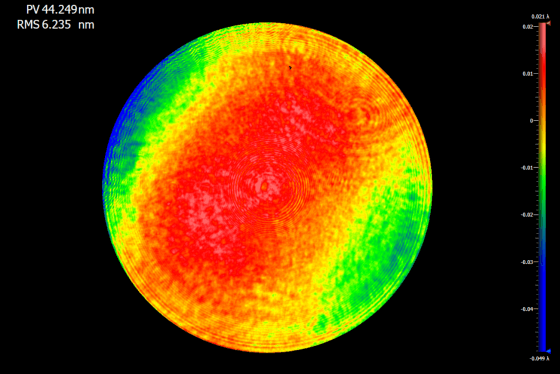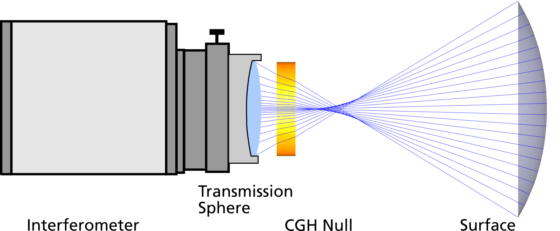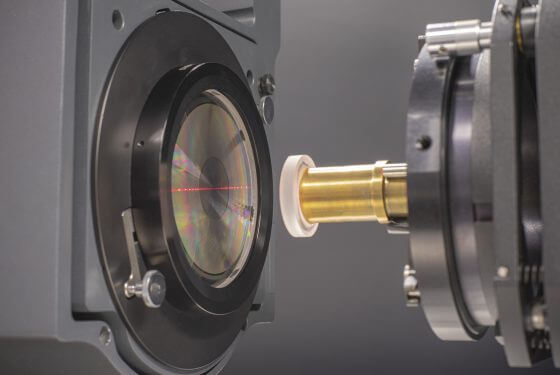
CGH null test for asphere metrology
A common solution for testing the shape of aspherical optics is using a Fizeau interferometer in combination with a custom computer-generated hologram (CGH). The principle behind the so-called CGH null test is that the CGH can be used to distort the wavefront coming out of the interferometer so that it matches the shape of the asphere. This way, if the surface shape is perfect, the result will be a phase null, meaning zero fringes in the interferogram. In the typical setup, a transmission sphere is used to pre-shape the wavefront to a spherical wave before creating the aspherical wavefront with the CGH.

Challenges and limitations of typical CGH Nulls
The reference wave for the interferogram is created in the transmission sphere, while the test wave is shaped by the CGH and reflected at the asphere surface back through the CGH. The wave front error that is evaluated by the interferometer is then a combination of errors from all optical surfaces that the test wave passes, i.e. the CGH and the surface under test. Since standard CGHs for null tests are created with electron beam lithography, substrates are typically 1/4 inch in thickness, with insufficient mechanical stability, thus introducing notable wavefront distortions.
It is also crucial that the CGH is aligned perfectly with the transmission sphere, requiring additional tools such as a CGH positioner allowing to move the CGH in up to six degrees of freedom.
Diffractive Fizeau Null Lenses – CGH Nulls with integrated reference plane!
Our Diffractive Fizeau Null Lenses (DFNL) overcome the limitations of traditional CGH for asphere testing. In DFNLs, the CGH surface not only generates the test wave, but also reflects the reference wave. Therefore the use of an additional reference optic such as a transmission sphere is not required. Since both reference and test wave have an identical path (except for the reflection at the surface under test), no additional wavefront error is introduced.
The base for DFNLs are precision fused silica substrates with a surface flatness of λ/20 or better, producing a highly accurate reference wavefront. As substrates are up to 1 inch in thickness, mechanical stability is excellent, allowing even for very large diameters. Depending on the interferometer, typical diameters are 4 inches or 6 inches, and up to 10 inches in diameter for certain applications.

CGH installation in seconds with our bayonet mount
Standard CGHs need to be carefully aligned relative to the interferometer and the transmission sphere and require additional positioning hardware or even additional alignment CGHs. This time-consuming and tricky process is not necessary with DIOPTIC DFNLs. They are equipped with a bayonet mount that fits our customer’s interferometer. Installation is done in seconds and since the reference wave is created by the CGH itself, further alignment is not required.
All in all, our DFNLs overcome the limitations of standard CGHs, allowing for an even more precise and faster null test of aspheric optics. Contact us today for a DFNL quotation for your aspheric optics or to learn more about our tools and accessories for interferometric tests of aspheres and other complex surfaces!
Get in touch with our experts to discuss your custom CGH null test!
Dr. Frank Weidner | Phone: +49 6201 650 40-17